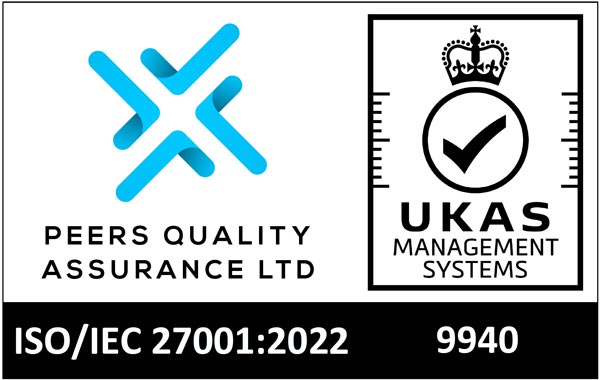Who is at risk of breast cancer?
There are many breast cancer risk factors for women and men which include both lifestyle and genetic factors. More than 55,000 new cases of breast cancer are diagnosed each year in the UK, with approximately 400 of those being men. This means that 1 in 7 women will develop breast cancer in their lifetime.
The key breast cancer risks include:
- Age
- Reproductive history
- Hormones (oestrogen)
- Breast density
- Previous breast disease
- Family history of breast and/or ovarian cancer
- Genetic inheritance
- Lifestyle Factors (alcohol, obesity, physical activity, HRT)
- Radiation exposure
Age
Age is the biggest risk factor in breast cancer (after gender), with older women being much more at risk than younger women. This is why the NHS screening programmes start at the age of 50, or 47 in some regions.
Reproductive History
There are many factors related to reproductive history which affect the risk of breast cancer. The age of a woman when she starts her periods, begins menopause and the number of children she has can all impact the chances of having breast cancer.
Women in developed countries have a higher risk of breast cancer, largely as a result of the later age of their first pregnancy, having lower numbers of children and less breastfeeding.
Hormones
Hormone therapies, such as HRT and some high-dose oestrogen-only oral contraceptives, have been found to increase the risk of breast cancer. In both cases, the risk is temporary and will decline over a period of years after the treatment is stopped.
Breast Density
Breast density is strongly related to breast cancer risk, and breast tissue that is denser presents a higher risk. Breast density does have a significant inherited component but can also be affected by weight, menopause and the number of children a woman has.
Family History
If you have a mother or sister who has had breast cancer, your risk factor is higher than that of a woman with no family history. The risk increases further if your relative was diagnosed with breast cancer under the age of 40.
If there are more than four female 1st or 2nd-degree relatives within a family who have had breast cancer, there may be a genetic mutation of the BRCA1 or BRCA2 genes. Women with this mutation have a 50-80% chance of developing breast cancer before the age of 70.
Male risk factors
Men at risk of breast cancer include those with a high oestrogen levels, exposure to radiation, a family history or recognised breast cancer gene in the family, obesity, chronic liver conditions, and a rare genetic condition called Klinefelter's syndrome.
What should you look out for? What are the symptoms of breast cancer?
Breast awareness is about becoming familiar with how your breasts look and feel, whatever your age, so that you can increase your chances of spotting breast cancer symptoms early.
Your breasts may change at different times during the month and as you get older, but if you are breast aware, you will recognise the changes.
Symptoms to look out for:
- A breast lump or thickening in the breast which is different to the rest of the breast tissue
- Continuous breast pain in one part of the breast or armpit
- One breast becomes larger or lower/higher than the other breast
- A nipple becomes inverted or changes shape or position
- Changes in the skin of your breasts including puckering or dimpling
- Swelling under the armpit or around the collarbone
- A rash on or around the nipple
- Discharge from one or both nipples
The breast awareness five-point code:
1. Know what is normal for you
2. Look at and feel your breasts to look for any recent changes
3. Know what changes (such as breast lumps or thickening) to look for
4. Report any changes to your GP or breast specialist without delay
5. Have routine breast screening from age 47+
Male Symptoms
The most common symptom of breast cancer in men is a unilateral firm lump in the breast tissue deep to the nipple. This is nearly always painless and other symptoms may include:
- Oozing from the nipple (a discharge) that may be blood-stained
- Swelling of the breast
- A sore (ulcer) in the skin of the breast
- A nipple that is pulled into the breast (called nipple retraction)
- Lumps under the arm
How to reduce your risk
A number of changes to your lifestyle can significantly reduce your risk of breast cancer including:
- Having children, especially at a younger age, and breastfeeding
- Reducing your weight if overweight or obese
- Increasing your physical activity
- Reducing your alcohol intake
- Avoiding HRT or oral contraception where possible
- Having regular breast cancer screening from age 40+, depending on your risk
Why should I get tested?
Fortunately, long-term survival rates have increased during the last 20 years as a result of increased breast awareness, breast screening, and the introduction of rapid access to one-stop diagnostic clinics.
If breast cancer is detected early, there is a very good chance that it can be treated successfully.
Although rarer, male breast cancer can be more complex and often presents at a more advanced stage. As with women, the single biggest risk factor for breast cancer in men is increasing age. Most cases of male breast cancer are diagnosed between the ages of 60 and 70.
How can I get tested? What are the tests available and how does it work?
Different types of tests for women and men include;
Ultrasound
The main diagnostic tool used in the clinic is ultrasound imaging which uses sound waves to produce pictures of the internal structures of the breast. Ultrasound is primarily used to help diagnose breast lumps or other changes the consultant breast surgeon may detect during your clinical breast examination. Ultrasound is safe, painless, non-invasive and does not use radiation.
Mammograms
These involve taking an x-ray picture of each breast and can detect cancer at an early stage before changes can be felt in the breast by you or your doctor.
Check4Cancer offers private mammograms for breast cancer diagnosis. Mammography is specialised medical imaging that uses a low-dose x-ray system to see inside the breasts.
Saliva and Family History Questionnaire
We now know of building blocks which make up our DNA which can increase the breast cancer risk. Analysis can now be performed on a saliva sample alongside a lifestyle and family history questionnaire which provides a risk score. This score allows women at a higher risk of breast cancer to start breast screening at an earlier age and have more frequent screening.
Find out more
- World Cancer Day - The importance of screening & reducing your risk
- Handy guide to performing a breast self-examination in 6 steps
Ask the Expert - Maria Daultrey discusses how to be breast aware by regularly checking your breasts - Reduce your cancer risk with lifestyle changes that you can make today
- Ask the Expert: Professor Gordon Wishart discusses the importance of screening mammograms to detect early breast cancer
- Professor Simon Russell answers some of the most pressing questions around breast cancer in our 'Ask the Expert' blog
- BeBreastAware - find out about the signs and symptoms of breast cancer
- BeBreastAware - find out about screening mammograms, what is involved and when you should be screened
- Male Breast Cancer - know the facts and get checked




